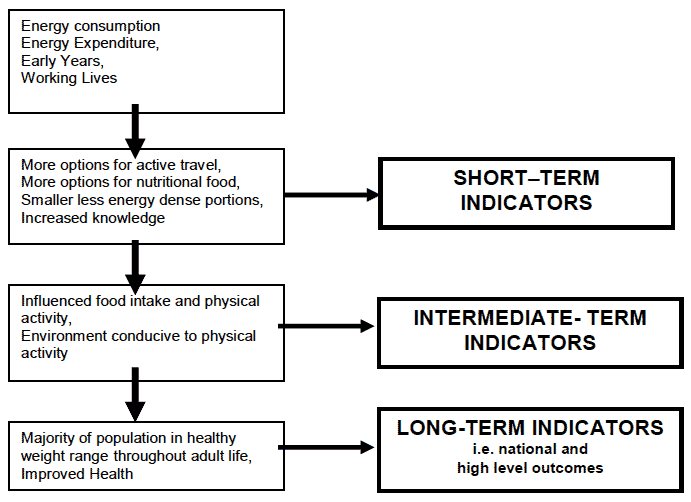Obesity Indicators 2014
This publication reports the latest available data for 16 indicators selected to monitor progress for the Prevention of Obesity Route Map. Most indicators are updated up to 2013, but for some indicators data is more or less up-to-date than this.
This document is part of a collection
Prevention of Obesity Route Map Indicator Framework
The indicator framework has been informed by NHS Health Scotland's healthy weight outcomes logic model and by the Scottish Public Health Network's Route Map engagement process[1]. A long list of indicators was sent to policy colleagues within the Scottish Government and a range of external experts for comment and to narrow down the list.
Indicators to monitor implementation and outcomes of the Route Map are wide-ranging (i.e. covering those areas of policy likely to have an impact on obesity as well as the specific health measures) and include top-line measures as well as interim indicators of progress. Short-term indicators are a mixture of process and output indicators used to measure the outputs and products of the Route Map e.g. increased understanding of physical activity and diet, more healthy food choices, more options for active travel. Intermediate and long-term indicators are outcome indicators used to measure the ultimate outcomes of the Route Map e.g. from behaviour changes in diet and physical activity to securing goals of healthy weight population and health improvements. The focus of the proposed indicator set is on national measures of progress, but the process of selecting indicators included consideration of measures which could indicate progress at local level and 6 of the final 16 included are measurable at Health Board or Local Authority level. We expect that there will need to be further local development of indicators suitable for local healthy weight strategies to use (although these will not be mandatory).
Obesity Indicator Model

Contact
Email: Daniel Adams
There is a problem
Thanks for your feedback